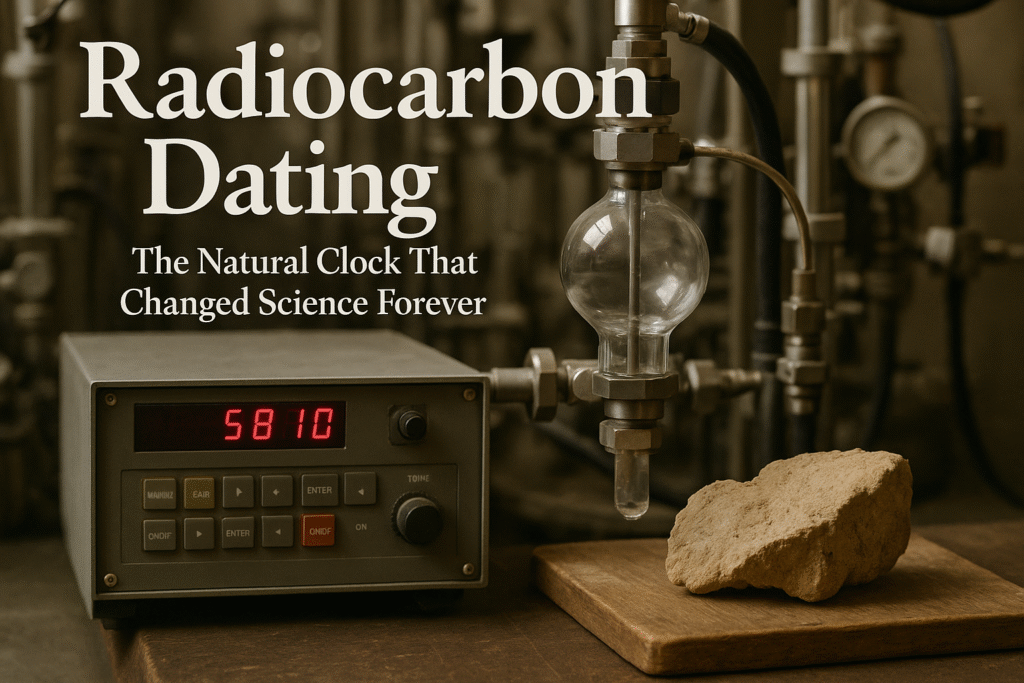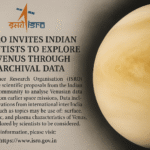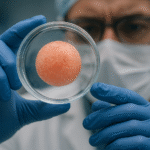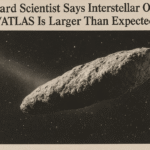By Harshit | 2 October 2025 | London | 12:00 PM BST
When something dies, a telltale radioactive signal ticks like a natural clock. Discovering it helped scientists solve all sorts of natural mysteries.
Sewage, Cosmic Rays, and a Radical Idea
In the mid-1940s, U.S. chemist Willard Libby set out to prove the existence of carbon-14 in nature. He reasoned that if cosmic rays were constantly striking nitrogen atoms in the atmosphere to form carbon-14, then living things would absorb it, and once they died, the isotope’s steady decay could serve as a natural clock.
To prove it, Libby searched in an unlikely place — sewage. Testing methane gas from Baltimore sewers, he found what he was looking for: carbon-14 in the wild. This discovery opened the door to a technique that would revolutionize archaeology, forensics, climate science, and even law enforcement.
Dating the Past
Radiocarbon dating works because living organisms continually absorb radioactive carbon dioxide from the atmosphere. Once they die, absorption stops, and the remaining carbon-14 decays at a fixed rate. By measuring what’s left, scientists can calculate when the organism died — a clock that starts ticking the moment life ends.
Libby’s method revealed the age of objects like the Dead Sea Scrolls and the remains of Egyptian Pharaoh Sesostris III’s tomb, reshaping historical timelines. In 1960, he won the Nobel Prize in Chemistry for the breakthrough.
From Fossilised Bat Urine to Human Bones
Modern labs such as the Oxford Radiocarbon Accelerator Unit continue to refine the method. Using accelerator mass spectrometers, scientists can now measure individual carbon-14 atoms in samples as small as a milligram, allowing precise dating of bones, seeds, parchment, ceramics, and even unusual materials like fossilised bat urine.
Radiocarbon dating has also resolved historic debates. For example, a skeleton found in Wales in 1823 — long believed to be 2,000 years old — was shown to be between 33,000 and 34,000 years old, the oldest known buried human remains in the UK.
Forensics and the “Bomb Pulse”
The technology has modern applications too. A method called the “bomb pulse” leverages the surge in atmospheric carbon-14 caused by mid-20th-century nuclear weapons tests. Because those levels have been falling in a predictable curve since, scientists can date remains from the 1950s onward to within a year.
This technique helped identify the remains of Laura Ann O’Malley, a 13-year-old girl who went missing in New York in 1975, when bones discovered decades later in California were matched to her timeline.
Fighting Wildlife Crime
Radiocarbon dating is also used to combat illegal ivory trafficking. Tests can determine whether elephants were killed before or after the 1989 global ivory ban. Wildlife biologist Sam Wasser has used this evidence to bring traffickers to justice — most notably Edouodji Emile N’Bouke, convicted in Togo in 2014.
The Clock That Changed History
Though the method only works on material up to 50,000 years old, radiocarbon dating remains one of science’s most powerful tools. From ancient scrolls to modern crime scenes, Libby’s “natural clock” continues to unlock secrets of the past — one tick at a time.







